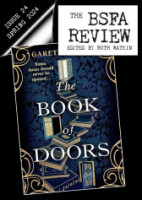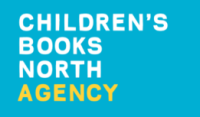From writer to published author in 7 simple steps

By Patricia Fry
firstwriter.com – Sunday March 27, 2011
Do you write for pleasure? Have you ever thought – even for a fleeting moment – about publishing your work? How do you know when it is time to shift from writer to published author?
For some writers, this is never going to happen because they just aren’t interested in taking their writing to the next level. They love writing and they don’t care about publishing their work. They just want to write when they feel like it. They do not relish the idea of writing for someone else or meeting deadlines. They would rather no one reads their poetry, stories or journal entries. They just want to write what they want to write when they want to write.
But there are many of you who, either secretly or openly, dream of having your writing published someday. However, you’re not sure how to make the transition from closet pleasure writer to published author. Here are some steps that might help you move more successfully toward your publishing goals:
1: Write something that is wanted/needed by a specific audience. Avid readers of romance or adventure novels, people who are seeking help with a problem or issue, folks eager to learn something new or those who devour young adult fantasies, for example.
2: Check your competition. Is your book up to par? Does it have everything it needs to qualify as a good book for preschool children? Is there a need for another book on cooking with herbs? What makes your self-help book for children of alcoholics different than what’s already on the market?
3: Study the publishing industry. You may not relish the idea of going back to school and learning about something as large and complex as publishing, when all you want to do is quietly produce your book and be on your way to stardom. In order to succeed as a published author on even a small scale, you need to know something about how the world of publishing works. What are your publishing options? What are the possible consequences of your choices? What are your responsibilities as a published author? Skip this step and you will be in over your head.
4: Write a book proposal. You may need a book proposal in order to get a foot in the door with the publisher you want. But the main reason for writing a book proposal is for you. A book proposal will tell you whether you have a book at all – whether it is a valid project. It will help you to determine if you have an audience for this book, who they are, how many there are and how you will reach them. Without this knowledge, you could become one of the 76 per cent of authors who fail each year.
5: Hire a good book editor. This step could make the difference between you landing a publishing contract or not and whether your book will be read and enjoyed or not.
6: Establish and build on your platform. Publishers want to know that an author has a platform – a way of attracting potential customers and connections that will help sell books. Whether you choose to go with a traditional royalty publisher or not, you need a platform. Think about it. If you were to publish a book today, how many people would buy it? If you’ve been hiding away in your writing room for years secretly writing, how would anyone know about you and why would they buy your book? What an author needs, as much as he needs to write a good book, is a following – a way of attracting readers.
One way to develop an audience is to submit articles on your topic or stories in your genre to a variety of print and online publications – lots of them. People who enjoy reading your stories or your articles will surely want to read your book. While you are writing your book, you should find ways to become known to your audience – get involved in groups and online sites related to your topic/genre. Launch a newsletter for your audience. Use your connections to reach your readers – ask to be guest blogger at your mentor’s popular blog, ask your pastor if you can present a workshop related to your book’s topic at the church, perhaps your former boss would announce your book to the company mailing list, for example.
7: Plan your marketing strategy. In today’s highly competitive publishing climate, it is crucial that you think about marketing and promotion even before producing a book. And promotion is ongoing for as long as you hope to sell copies of your book. Examine your skills and propensity for various promotional activities. This would be a good time to sharpen and add to your skills. But you also need to know what it takes to promote a book – most new authors do not. As you study the publishing industry (number 3 on this list), you’ll begin to understand why the author must develop a marketing plan and what book promotion entails. The time to plan your strategy is before you decide to publish.
Publishing is not an extension of your writing. It is not a natural course that writers can take using the same mindset and skills they use when writing. Publishing is a business – a fiercely competitive business – and, when you decide to enter into this world, in order to succeed, you must start thinking like a businessman/woman.
Follow these seven steps and you will experience a greater level of success.
About the Author
Patricia Fry has been writing for publication for over 35 years. She has 33 books to her credit – most of them related to publishing and book promotion. Patricia offers 7 online courses for writers and authors, including a course on how to build your author's platform. www.matilijapress.com/courses.htm. www.patriciafry.com. Visit her publishing blog daily: www.matilijapress.com/publishingblog.




 How I got my book published - An interview with author, Marion Grace Woolley
How I got my book published - An interview with author, Marion Grace Woolley How I got published - An interview with author, Kent Richardson
How I got published - An interview with author, Kent Richardson So you want to be a writer? These are the 10 steps to make it happen
So you want to be a writer? These are the 10 steps to make it happen How To Become A Published Writer
How To Become A Published Writer How To Earn Side Income As A Published Author: 5 Key Considerations
How To Earn Side Income As A Published Author: 5 Key Considerations Simple record-keeping and tax deductions for writers
Simple record-keeping and tax deductions for writers The first three steps to finding a literary agent
The first three steps to finding a literary agent How I got a literary agent - An interview with author, Graham Soloman
How I got a literary agent - An interview with author, Graham Soloman How I got a publisher - An interview with author, Lynette Mather
How I got a publisher - An interview with author, Lynette Mather Ever wondered how a book gets published?
Ever wondered how a book gets published? How I got my book published - An interview with author, Stephen Nuttall
How I got my book published - An interview with author, Stephen Nuttall How I got my book published - An interview with author, James J. Garber
How I got my book published - An interview with author, James J. Garber Bournemouth to host romance writing festival for writers
Bournemouth to host romance writing festival for writers New Publisher Listing: Adventure Books by Vertebrate Publishing
New Publisher Listing: Adventure Books by Vertebrate Publishing New Literary Agent Listing: Amandeep Singh
New Literary Agent Listing: Amandeep Singh New Magazine Listing: The BSFA Review
New Magazine Listing: The BSFA Review New Publisher Listing: Practical Pre-School Books
New Publisher Listing: Practical Pre-School Books DK ventures into children’s fiction with new imprint DK flip
DK ventures into children’s fiction with new imprint DK flip New Publisher Listing: Sourcebooks eXplore
New Publisher Listing: Sourcebooks eXplore New Book Publisher Listing: Sourcebooks Horror
New Book Publisher Listing: Sourcebooks Horror Hayward poet Pat Doyne holds free metaphor workshop
Hayward poet Pat Doyne holds free metaphor workshop New Publisher Listing: Bearded Badger Publishing Co.
New Publisher Listing: Bearded Badger Publishing Co. Authors await overdue payments as publisher Unbound goes into administration
Authors await overdue payments as publisher Unbound goes into administration New Literary Agency Listing: Children’s Books North Agency
New Literary Agency Listing: Children’s Books North Agency New Spotify Audiobooks publishing programme for independent authors
New Spotify Audiobooks publishing programme for independent authors Publisher Unbound Slides Into Administration
Publisher Unbound Slides Into Administration ChatGPT firm reveals AI model that is ‘good at creative writing’
ChatGPT firm reveals AI model that is ‘good at creative writing’
